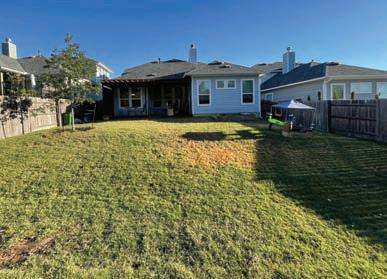
3 minute read
THE SPACE BETWEEN VISION & REVISION
from Summer 2025 Issue - Outdoor Living
by SYNKD—Landscape design, build and maintain all on the same page
How To Balance Client Feedback With Design Intent
By Angelica & Matt Norton
Let’s consider this step of a project we all know too well: after working through the design goals, scope, constraints, and budget, you’ve developed a thoughtful concept and presented it to the client. Now comes the feedback!
At this point, the challenge lies in striking a balance between advocating for ideas supporting the project’s integrity and incorporating client suggestions that may lead to a piecemeal result.
As designers, many of us recall studio critiques where feedback—though meant to push our work forward—sometimes led to awkward design compromises. We tried to fit in every idea, fearing the loss of something “interesting,” only to end up with overly busy or unfocused solutions. Over time, we learn to listen more carefully, to ask why certain suggestions are being made, and to discern what’s truly important to the client.
It’s easy to take feedback personally, especially when a client doesn’t respond with the enthusiasm we hope for. But revision requests are not a rejection of your abilities—they’re an opportunity to refine and clarify.
By setting ego aside and engaging with curiosity, you can uncover the intent behind a suggestion.
For instance, a client proposing to swap a deck for pavers may be seeking cost savings without knowing if the change accomplishes that. They might dislike the material, be referencing something they’ve seen, or be replicating a previous setup because it’s familiar. Their suggestion might also indicate a deeper issue with layout or function, or with scale, where they believe bigger is better. Understanding the “why” behind the feedback allows you to respond more effectively—sometimes by adjusting the design, and other times by educating the client.
There are moments when you must advocate for practical limits. If a client insists on placing a pergola within an easement or exceeding impervious coverage allowances, it’s your responsibility to explain the consequences. Risk-taking without understanding liability, cost implications, or the potential for mid-build delays can jeopardize the entire project. Clear communication about these boundaries protects both your firm and the client.
The biggest benefit of client feedback— even if it’s not what we’re expecting—is it introduces a novel idea at moments when we might slip into design autopilot, reusing familiar solutions or plant selections. It challenges our comfort zone, encouraging us to pause, reconsider, and sometimes discover a new direction, thereby reinvigorating the design process.

With experience, we become better listeners and collaborators. And when clients meet us halfway—trusting our expertise while staying actively engaged—the process becomes truly generative. The most successful projects often emerge from this creative tension, leading to those “aha” moments that unlock unique, thoughtful design solutions. n
ABOUT THE AUTHOR
Angelica Norton, ASLA
Owner of Open Envelope Studio LLC angelica@openenvelopestudio.com www.oes.design











